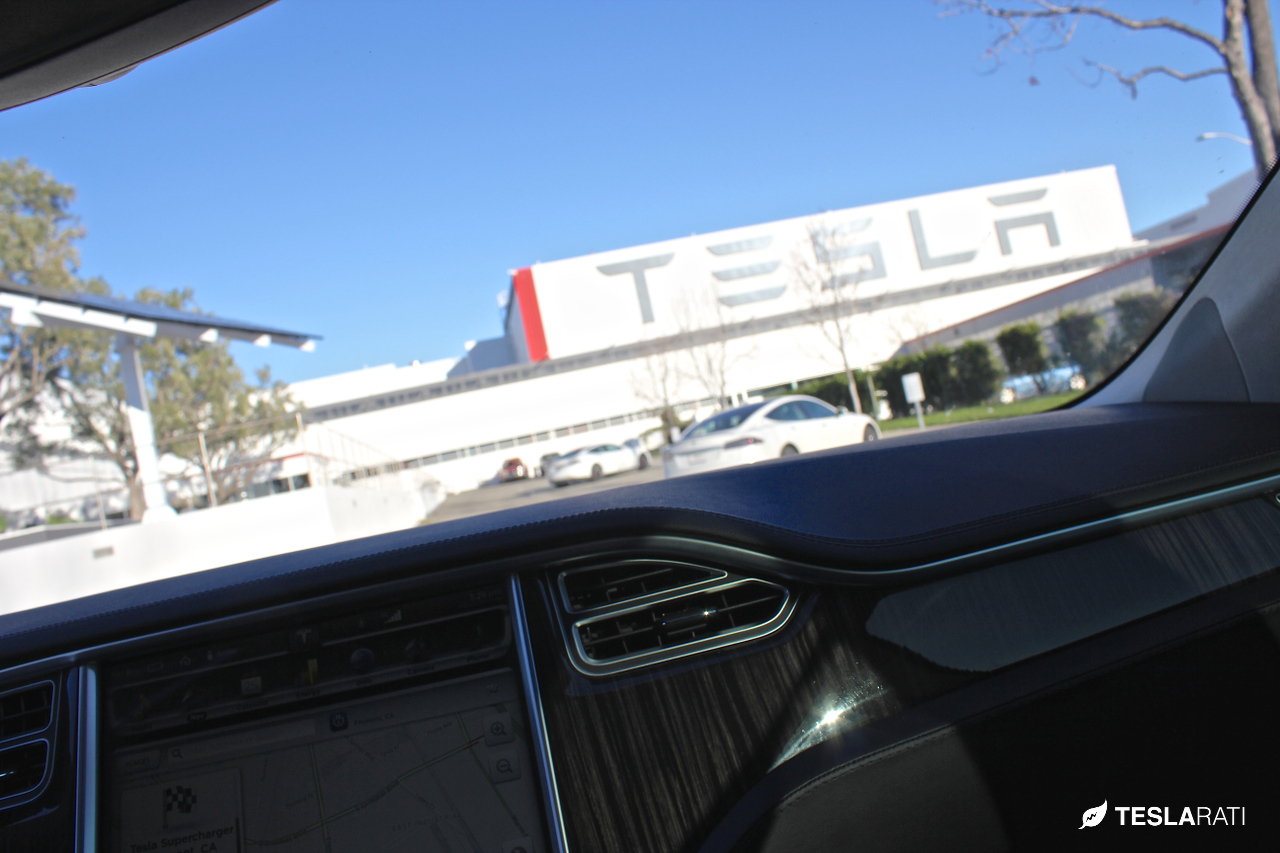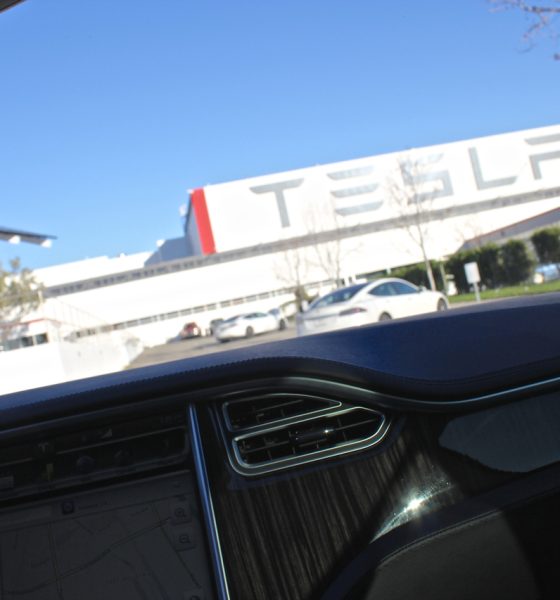

News
Tesla “whistleblower’s” lawyer opens up about Martin Tripp’s sudden Twitter departure
Less than a day after posting images supposedly supporting his case against Tesla, alleged saboteur and self-proclaimed “whistleblower” Martin Tripp has opted to leave Twitter. Tripp’s departure from the social media platform comes amid the aftermath of his posts yesterday, which allegedly depicted flawed battery packs that Tesla installed on some Model 3.
Apart from photos taken inside Gigafactory 1, Tripp also released a list of Model 3 VINs which he claimed were equipped with damaged battery packs. The former employee shared screenshots of emails he sent to Elon Musk about Tesla’s operations as well. These images were quickly picked up by several media outlets.
Unfortunately for Tripp, his account was slapped with a 12-hour suspension by Twitter, due to one of his tweets containing an email address listing Elon Musk’s name. In a statement to Gizmodo, Tripp noted that Twitter warned him that he “may not publish or post other people’s private information without their express authorization and permission.”
Stuart D. Meissner, Tripp’s lawyer in his countersuit against Tesla, also contacted Linette Lopez, one of the reporters who covered the former Tesla employee’s tweets. It was not long before Martin Tripp opted to depart from Twitter completely.
https://twitter.com/StuartMeissner/status/1029905643208101889
In a series of recent tweets, Meissner announced that Tripp decided to take down his Twitter page on his advice. The lawyer also denied reports that Tripp’s Twitter account was suspended earlier today. Meissner maintained that Tripp’s departure from the social media platform was voluntary, so that there will not be any more confusion about his case against Tesla. Furthermore, the lawyer also claimed that a number of his client’s social media pages were hacked.
Following are Meissner’s updates explaining why Tripp opted to leave Twitter.
https://twitter.com/StuartMeissner/status/1030138369840500736
https://twitter.com/StuartMeissner/status/1030139433276846081
https://twitter.com/StuartMeissner/status/1030142208572358657
Martin Tripp, a former Tesla engineer working at Gigafactory 1, was accused by the electric car maker of sabotage last June. A lawsuit filed by the company against Tripp alleged that the former employee hacked into Tesla’s Manufacturing Operating System, sent confidential data to external sources, and misreported to the media. Among Tripp’s contacts in the press was Business Insider reporter Linette Lopez, who, in turn, published a number of articles based on information provided by the former Tesla engineer. Lopez confirmed this when she was featured in a segment at CNBC’s Halftime Report last month.
Interestingly, Lopez’s comment on CNBC was a bit different from Tripp’s statement immediately after he received a lawsuit from Tesla. Tripp claimed to CNN Money that he contacted several media outlets about his allegations against the company, and that he had spoken at length with one of them, but the news outlet was yet to do a story about his revelations. During this time, Lopez had already published articles that included information seemingly provided by Tripp.
Tesla, for its part, has denied Tripp’s claims. In response to the release of Model 3 VINs that were allegedly equipped with damaged battery packs, the electric car maker was firm in the notion that the former Tesla engineer’s allegations were false.
“As we’ve said before, these claims are false, and Mr. Tripp does not even have personal knowledge about the safety claims that he is making. No punctured cells have ever been used in any Model 3 vehicles in any way, and all VINs that have been identified have safe batteries. Notably, there have been zero battery safety issues in any Model 3.”

News
Tesla FSD fleet is nearing 7 billion total miles, including 2.5 billion city miles
As can be seen on Tesla’s official FSD webpage, vehicles equipped with the system have now navigated over 6.99 billion miles.

Tesla’s Full Self-Driving (Supervised) fleet is closing in on almost 7 billion total miles driven, as per data posted by the company on its official FSD webpage.
These figures hint at the massive scale of data fueling Tesla’s rapid FSD improvements, which have been quite notable as of late.
FSD mileage milestones
As can be seen on Tesla’s official FSD webpage, vehicles equipped with the system have now navigated over 6.99 billion miles. Tesla owner and avid FSD tester Whole Mars Catalog also shared a screenshot indicating that from the nearly 7 billion miles traveled by the FSD fleet, more than 2.5 billion miles were driven inside cities.
City miles are particularly valuable for complex urban scenarios like unprotected turns, pedestrian interactions, and traffic lights. This is also the difference-maker for FSD, as only complex solutions, such as Waymo’s self-driving taxis, operate similarly on inner-city streets. And even then, incidents such as the San Francisco blackouts have proven challenging for sensor-rich vehicles like Waymos.
Tesla’s data edge
Tesla has a number of advantages in the autonomous vehicle sector, one of which is the size of its fleet and the number of vehicles training FSD on real-world roads. Tesla’s nearly 7 billion FSD miles then allow the company to roll out updates that make its vehicles behave like they are being driven by experienced drivers, even if they are operating on their own.
So notable are Tesla’s improvements to FSD that NVIDIA Director of Robotics Jim Fan, after experiencing FSD v14, noted that the system is the first AI that passes what he described as a “Physical Turing Test.”
“Despite knowing exactly how robot learning works, I still find it magical watching the steering wheel turn by itself. First it feels surreal, next it becomes routine. Then, like the smartphone, taking it away actively hurts. This is how humanity gets rewired and glued to god-like technologies,” Fan wrote in a post on X.
News
Tesla starts showing how FSD will change lives in Europe
Local officials tested the system on narrow country roads and were impressed by FSD’s smooth, human-like driving, with some calling the service a game-changer for everyday life in areas that are far from urban centers.

Tesla has launched Europe’s first public shuttle service using Full Self-Driving (Supervised) in the rural Eifelkreis Bitburg-Prüm region of Germany, demonstrating how the technology can restore independence and mobility for people who struggle with limited transport options.
Local officials tested the system on narrow country roads and were impressed by FSD’s smooth, human-like driving, with some calling the service a game-changer for everyday life in areas that are far from urban centers.
Officials see real impact on rural residents
Arzfeld Mayor Johannes Kuhl and District Administrator Andreas Kruppert personally tested the Tesla shuttle service. This allowed them to see just how well FSD navigated winding lanes and rural roads confidently. Kruppert said, “Autonomous driving sounds like science fiction to many, but we simply see here that it works totally well in rural regions too.” Kuhl, for his part, also noted that FSD “feels like a very experienced driver.”
The pilot complements the area’s “Citizen Bus” program, which provides on-demand rides for elderly residents who can no longer drive themselves. Tesla Europe shared a video of a demonstration of the service, highlighting how FSD gives people their freedom back, even in places where public transport is not as prevalent.
What the Ministry for Economic Affairs and Transport says
Rhineland-Palatinate’s Minister Daniela Schmitt supported the project, praising the collaboration that made this “first of its kind in Europe” possible. As per the ministry, the rural rollout for the service shows FSD’s potential beyond major cities, and it delivers tangible benefits like grocery runs, doctor visits, and social connections for isolated residents.
“Reliable and flexible mobility is especially vital in rural areas. With the launch of a shuttle service using self-driving vehicles (FSD supervised) by Tesla in the Eifelkreis Bitburg-Prüm, an innovative pilot project is now getting underway that complements local community bus services. It is the first project of its kind in Europe.
“The result is a real gain for rural mobility: greater accessibility, more flexibility and tangible benefits for everyday life. A strong signal for innovation, cooperation and future-oriented mobility beyond urban centers,” the ministry wrote in a LinkedIn post.
News
Tesla China quietly posts Robotaxi-related job listing
Tesla China is currently seeking a Low Voltage Electrical Engineer to work on circuit board design for the company’s autonomous vehicles.

Tesla has posted a new job listing in Shanghai explicitly tied to its Robotaxi program, fueling speculation that the company is preparing to launch its dedicated autonomous ride-hailing service in China.
As noted in the listing, Tesla China is currently seeking a Low Voltage Electrical Engineer to work on circuit board design for the company’s autonomous vehicles.
Robotaxi-specific role
The listing, which was shared on social media platform X by industry watcher @tslaming, suggested that Tesla China is looking to fill the role urgently. The job listing itself specifically mentions that the person hired for the role will be working on the Low Voltage Hardware team, which would design the circuit boards that would serve as the nervous system of the Robotaxi.
Key tasks for the role, as indicated in the job listing, include collaboration with PCB layout, firmware, mechanical, program management, and validation teams, among other responsibilities. The role is based in Shanghai.
China Robotaxi launch
China represents a massive potential market for robotaxis, with its dense urban centers and supportive policies in select cities. Tesla has limited permission to roll out FSD in the country, though despite this, its vehicles have been hailed as among the best in the market when it comes to autonomous features. So far, at least, it appears that China supports Tesla’s FSD and Robotaxi rollout.
This was hinted at in November, when Tesla brought the Cybercab to the 8th China International Import Expo (CIIE) in Shanghai, marking the first time that the autonomous two-seater was brought to the Asia-Pacific region. The vehicle, despite not having a release date in China, received a significant amount of interest among the event’s attendees.








